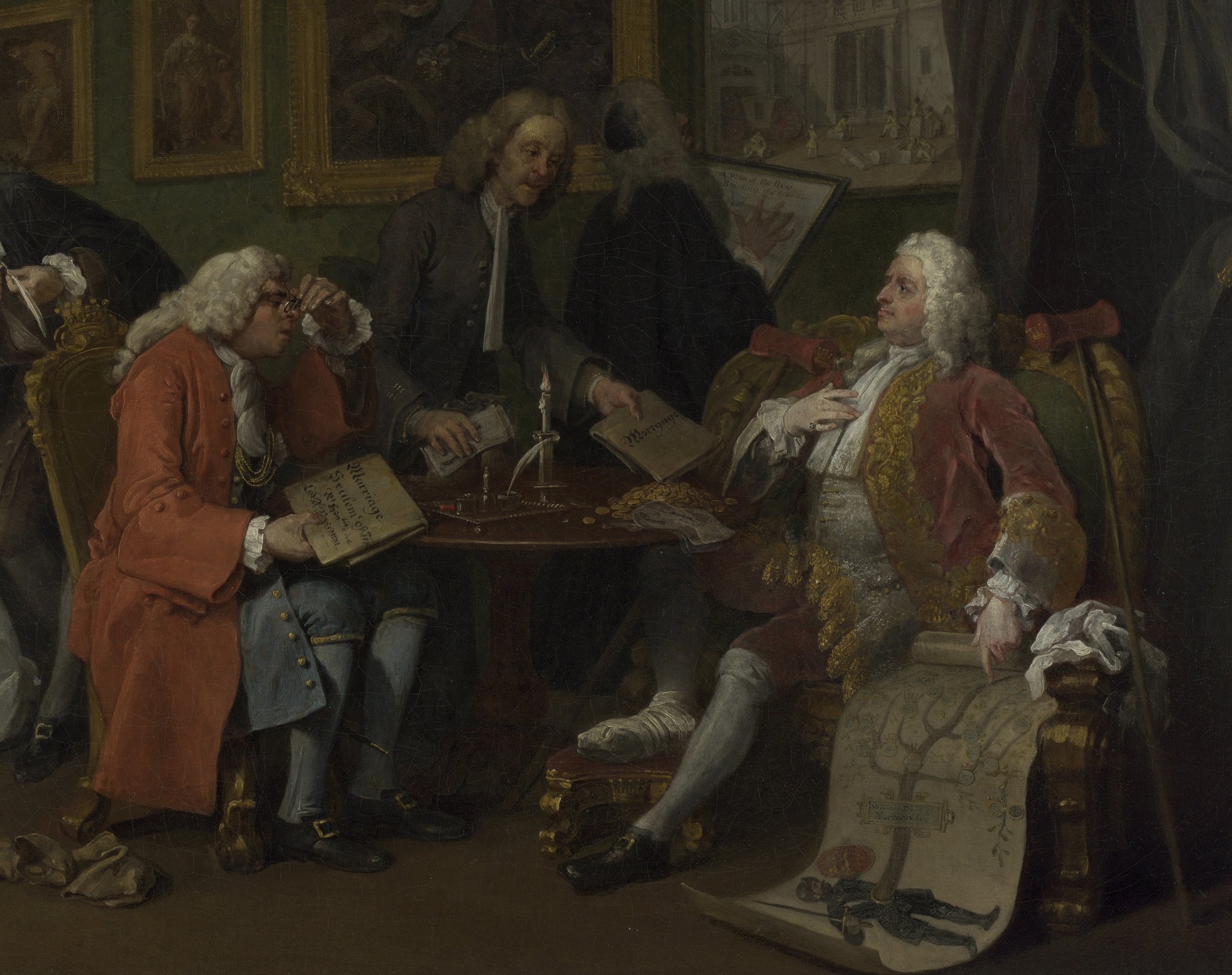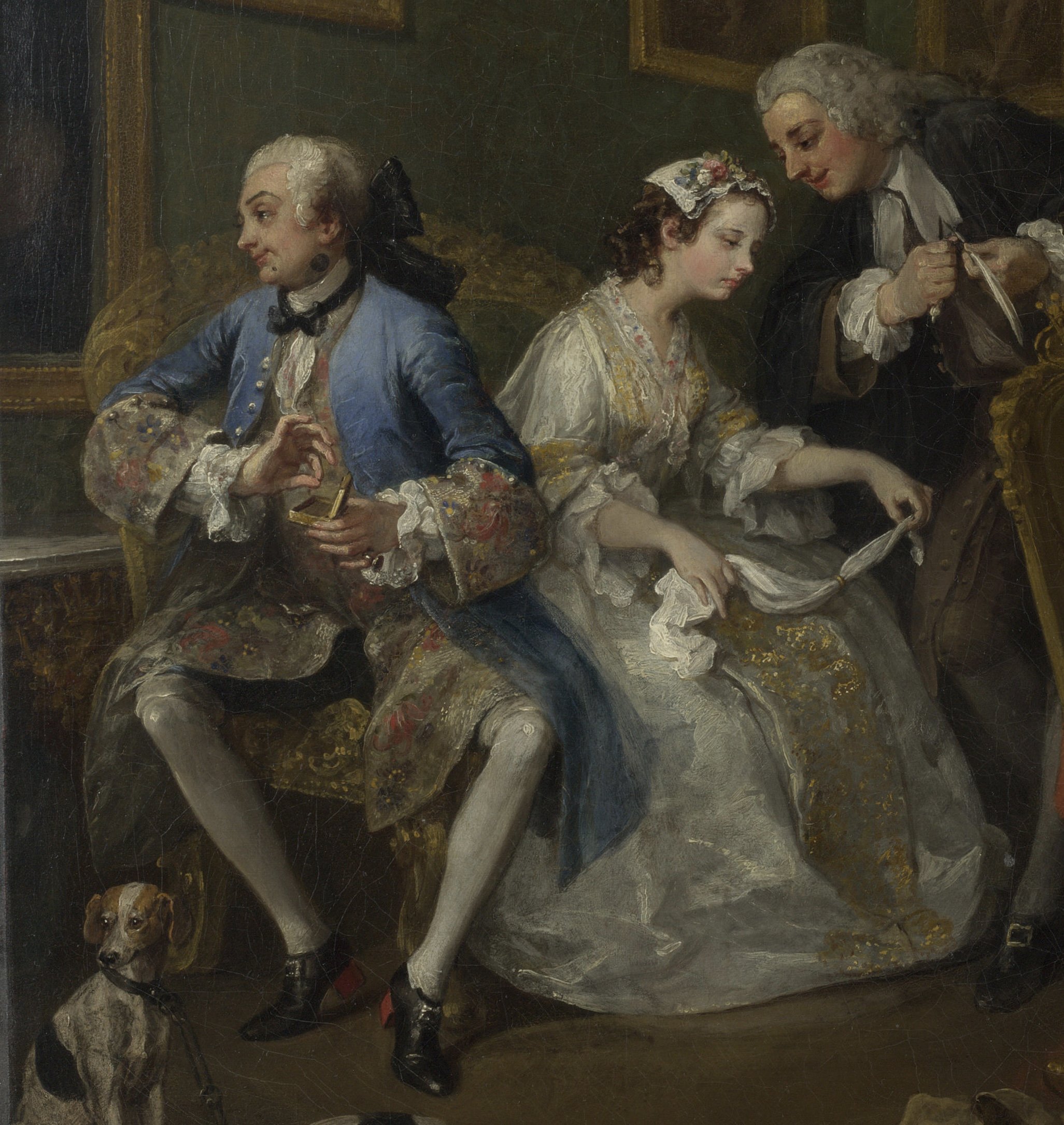How Art Changed History: English Marriage Practices
Music credit for intro song in audio version above:
This Too Shall Pass by Scott Buckley | www.scottbuckley.com.au Music promoted by https://www.chosic.com/free-music/all/ Creative Commons CC BY 4.0 https://creativecommons.org/licenses/by/4.0/
With the state of current world events, I found the thought of how art has impacted history to be bouncing around in my mind more than usual. When I used to teach European History, the curriculum weaved artistic movements into each time period of history. Some of those works of art really stuck with me. So, I’m beginning a new series of blog posts centered around the theme of “how art changed history.” This is a compelling topic as it serves as a reminder to those less inclined to think art is important by showing them that it does in fact change the world.
I want to preface this post by saying the examples I will share throughout these upcoming blog posts are not an exhaustive list. Rather, I have chosen some examples that particularly have stood out to me in influencing the direction of history. I’d love for you to share other examples you can think of in the comment section after you finish reading!
Industrial England and Arranged Marriages in the 1700s-1800s: Marriage a-la Mode by William Hogarth
As industrialization took hold in England during the late 1700s, an interesting thing happened amongst social classes. One might argue this progression began even before the Industrial Revolution but for the limited nature of this article, I will talk about its changes during this time period. Historically in England, those of the nobility were given higher status and privileges simply due to their bloodlines. I should also say, this was not an exclusively English thing and happened throughout much of Europe. These members of English nobility often served in Parliament in the House of Lords. There was also a group known as the House of Commons. If you are from the US, the best comparison is how Congress is bicameral, (made up of the Senate and the House of Representatives).
Traditionally, the House of Lords held more power and sway over Parliamentary decisions. After the English Civil War of the mid-1600s and then later, industrialization in the 1700s, led to a power shift. The middle class was becoming more powerful due to their monetary status in managing businesses and international trade. Simultaneously, the noble purse was shrinking over time as feudal practices had been outlawed (along with other reasons). This meant that the nobility was going to do whatever they could to continue to grasp at their fading power. One way this revealed itself was through the marriage practices that especially became prevalent during the 1700s. Remember, the nobility is seeking money while the middle class is seeking status/power. So, a great number of arranged marriages occurred at this time between the nobility and middle class. You might be rightfully thinking, arranged marriage practices have been around for millennia (several examples exist in the Bible). However, it had never been so exposed how unhappy or even “wrong” these arrangements might be until the industrialization era. You must remember the 1700s and 1800s brought the Great Awakening, The Enlightenment, the Scientific Revolution, the outlawing of the slave trade, the creation of “monarch-free” countries, and the discussion of universal suffrage. People were very much obsessed with human rights and happiness. Even the US Declaration of Independence mentions, “…the pursuit of happiness.”
Artists, writers, and others began discussing the value of traditional practices. One of the social critics of this time was an English artist named William Hogarth. Through his compelling art, he expertly revealed the flaws in the English social system. One of his series called Marriage a-la Mode displays the stages of a union and its ultimate devolution.
Marriage a-la Mode: The Marriage Settlement, William Hogarth, 1743.
In the first painting of the set of six (and in my opinion the most important of the whole series), The Marriage Settlement, we can see a negotiation taking place. Can you spot the two who are to be betrothed? They are the most bright/clear figures in the whole painting and they sit to the far left. Do they appear in love? No. Though they both sit on the same couch, they are turned away from each other. The woman appears to be recovering from crying, nervously twisting her handkerchief, while the man is admiring his own reflection in the mirror.
Male figures (detail), Marriage a-la Mode: The Marriage Settlement, William Hogarth, 1743.
On the right, we see two white wigged men sitting at a table while a man stands before them discussing the logistics of the marriage contract. Can you guess which man is a noble and which is a member of the wealthy middle-class? The larger of the two men, with a gold embroidered coat is the member of nobility. With his left hand, he points at a family tree which traces his bloodline back to ancient lords and knights. Another indication of his wealth is his bandaged right foot which he has propped on a footstool. This is supposed to show that he has gout. Gout was somewhat common amongst nobility due to their diets that were rich with red meats, sweets, and alcohol. It actually used to be called “the disease of kings” and “rich man’s disease” because of this!
On the other hand, the middle-class man wears his spectacles and closely inspects the terms of the union with strong business acumen. While his clothes are certainly not as elaborate as the noble’s clothing, they definitely designate him as someone with money. This man is willing to give a considerable dowry for his daughter’s marriage in return for her gaining titles of nobility.
Who is this painting really about? I believe that is part of the message Hogarth was trying to send. While a marriage should be focused on those making the union, as they are the ones to live with it, Hogarth emphasizes how it has become more of a business transaction at the cost of their children’s happiness. Let’s look back at the young couple now that you understand the figures in the painting a little better.
Young couple (detail), Marriage a-la Mode: The Marriage Settlement, William Hogarth, 1743.
Which individual is the child of the middle-class man and which is the child of the noble? The self-consumed young man is the child of the noble while the depressed, young woman is the child of the middle-class man. Now that we’re looking at this couple up close, take a look at the young man’s face and neck. Do you see the large black spot on his neck? Hogarth used this to indicate that he has syphilis. Believe it or not, syphilis was a commonly depicted disease in art and served as a method of indicating purity. Read more about that here at this linked medical article. Historically, promiscuous women were usually shown as the ones who “infected” others. So, it is interesting here that Hogarth chose to depict its origins from the young, noble man. This is typical Hogarth fashion—to upset the prevailing social standards!
In the other five subsequent paintings, Hogarth shows how this loveless marriage leads to affairs. The woman eventually becomes infected with syphilis too and in one painting we see she has a baby born with syphilis as well. The last painting depicts the wife dying (from syphilis or something else, it’s unclear). Hogarth worked on these paintings from 1743-1745 and had them turned into engavings in 1745. The engravings were quite popular while the original paintings did not sell for what Hogarth hoped they were worth. They also weren’t as popular as his earlier moralistic series such as A Harlot’s Progress and A Rake’s Progress. Neither of those directly poked fun at the practices of the upper class.
Around the time that Hogarth’s work was being widely shared, people were beginning to accept “love marriages” more and more. Young couples began to question the long term effects of an ill-matched marriage. Love began to trump the financial or social benefits of a union. The engravings I mentioned above were very affordable and through that, Hogarth’s art and the message behind each piece were able to reach many people. In previous blog posts, I have mentioned the impact of seeing imagery repeated. We humans tend to attach to things like that.
Now, I’m not going to argue this shift to “love marriages” is entirely due to Hogarth’s art but I do think it provided a visual element to legitimize what people were beginning to think about the purpose of marriages. It revealed the ugly side of loveless marriages in a very brutal way and we cannot forget the power that visuals have over our psyche. By the Victorian era, particularly with the union of Queen Victoria and Prince Albert, “love marriages” were widely accepted in England and mostly the standard.
What do you think of this topic? Share your thoughts in the comments! Remember you can subscribe to my blog so you can be notified each time a new post is made and you can follow me on instagram @ebofficialart where I share all sorts of art content!
Works Consulted:
Stephanie Coontz discusses this transition to “love marriages” in more depth in her book, Marriage, a History: From Obedience to Intimacy, or How Love Conquered Marriage.




